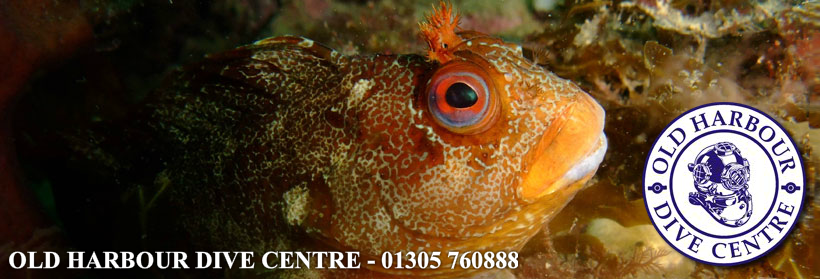Keep Diving! PADI Specialty Courses:
Click to read more...
CLUB MEMBERS!!
Your Specialty of the Month calendar is now here! Remember - you can only get the specialty of the month discount if you sign up to do that specialty during it's allocated month!
Challenge your dive buddy to see who can complete the most PADI courses or use the calendar as you work towards your Master SCUBA Diver rating.
With Speciality of the Month, you can also make a plan to combine travel and training - prepare for your next holiday by taking a PADI Specialty course before you go!
What are you waiting for - get started today and dive in tomorrow!
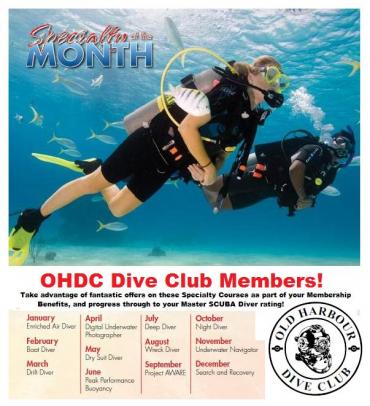
Click the picture above to see a larger image.
AWARE FISH ID
Have you ever been scuba diving and asked yourself, "What was that?”
The PADI Project AWARE Fish Identification Specialty course provides you with the fish identification basics so that next time, you know the answer.
The Fun Part
You’ll find you enjoy your dives even more when you recognize the creatures that you see. You can use the skills you learn on every scuba diving holiday because once you learn the main fish families and characteristics, it will help you decipher the species you see all over the world.
For example, a butterfly fish in the Caribbean has a similar shape to a butterfly fish in Southeast Asia, but their colours and markings maybe wildly different. If you know what fish family it belongs to, it becomes much easier to look up the local name or at least be able to intelligently ask the local scuba instructor what you saw. That works better than asking about a “yellow thingy with a funny tail fin.”
What You Learn
During two dives you gain hands-on experience in looking for and identifying the fascinating fish you see underwater.
You’ll learn :
How to identify characteristics of local fish families and species
Fish survey techniques and strategies
How to practice fish identification dive planning, organization and procedures
The Scuba Gear You Use
You use all the basic scuba gear. You may also need some scuba accessories such as a dive slate for making notes when conducting fish surveys.
The Learning Materials You Need
'AWARE’s Our World Our Water' publication includes a section on identifying reef fish based on body shape and habitat. You’ll also learn about marine life indigenous to tidal zones, polar regions, kelp forests, and wetlands. 'Our World Our Water' also includes a five page glossary of terminology used by marine biologists.
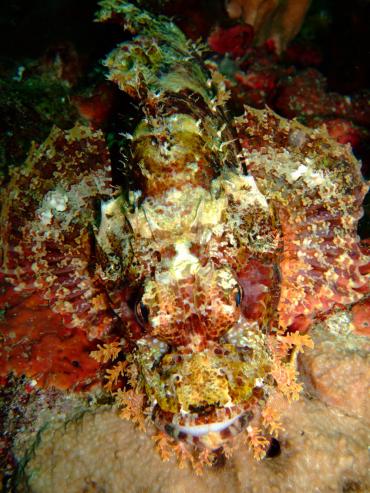
Prerequisites:
To take this course, you must be a PADI Open Water Diver or Junior Open Water Diver.
Your Next Adventure
While you’re learning about fish, you’ll probably also be curious about the different types of coral and want to check out the Coral Reef Conservationist course.
You may also want to brush up on your underwater photography skills so that you can document and capture images of the species you’re encountering.
BOAT DIVER
Whether you’ve never made a boat dive or you’ve logged dozens, the PADI Boat Diver Specialty course can benefit almost every diver, as different boats in different parts of the world do things differently.
The Fun Part
Diving from a boat is fun, especially when you look at ease when maneuvering around on it. It’s fun to know what you’re doing.
What You Learn
Learn the tips, tricks and ways to:
Dive from boats ranging from small inflatables to giant liveaboards and how they differ
Gain experience and training from diving on boats in your local area
Safely enter and exit the water
Sometimes it’s better to hand your gear up to the crew and then climb in the boat
Sometimes you just take off your fins and weights and walk up the ladder
Stow your gear in the most appropriate areas
Use surface lines to initiate or conclude your dives.
Locate basic boat safety equipment
The Scuba Gear You Use
You use all the basic scuba gear. Depending on what type of diving you’ll be doing from the boat, you may also want to use underwater photography equipment, a dive light, a dry suit, lift bag, a surface marker buoy or other specialty gear.
The Learning Materials You Need
Diving from a boat is a convenient and fun way to explore the underwater world. By reviewing the PADI Boat Diver Manual and DVD, you’ll learn the important do’s and don’ts of boat diving including: boat terminology, etiquette, safety and procedures.
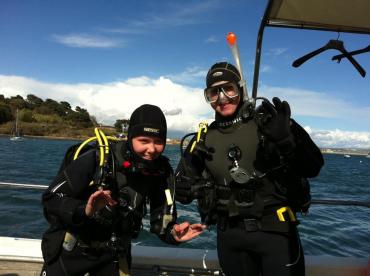
Prerequisites:
Must be a PADI Open Water Diver or Junior Open Water Diver
Your Next Adventure
You can do many types of diving from a boat. Just about any PADI course can be taken in conjunction with the Boat Diver course, which can help you reach the coveted Master Scuba Diver rating.
THE AWARE CORAL REEF CONSERVATION COURSE
The AWARE Coral Reef Conservation Specialty course is designed to inform you about the world’s coral reefs.
The Fun Part
As a scuba diver, the health of aquatic ecosystems is often what makes a good dive. Become aware of the fragileness of coral reefs and how you can help preserve them.
What You Learn
The AWARE - Coral Reef Conservation Specialty course teaches you about the vital role of coral reefs in the marine environment. The course also familiarizes you with the current state of the world's coral reefs and how you can help. You will learn about the Project AWARE Foundation and:
How coral reefs function
Why they are so important
Why many reefs are in serious trouble
What you can do to prevent further decline
The Type of Scuba Gear You Use
You use all the basic scuba gear
The Learning Materials You Need
Our World, Our Water peels back the curtain and takes you behind the scenes of our underwater world. Discover just how important our underwater eco-systems are and what you can do to help protect them.
Prerequisites
There are no dives or age limits. Divers and non-divers alike enjoy learning about the aquatic environment.
Your Next Adventure
Since fish life and coral reefs go hand in hand, it also makes sense to learn about fish identification with the AWARE Fish ID course.
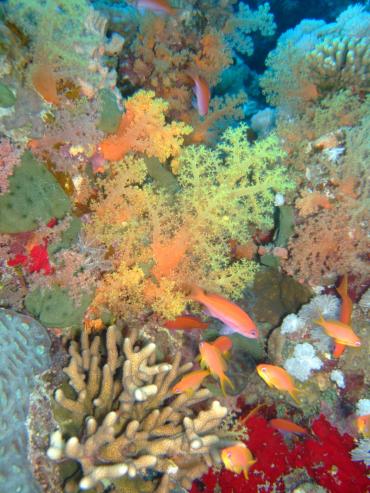
You may also want to brush up on your underwater photography skills so that you can document and capture images of the conditions of the reefs and species you’re encountering.
DEEP DIVER
The PADI Deep Diver Course: After your first few scuba dives, you soon want to explore a bit deeper. There’s something exciting and mysterious about the depth that attracts dives.
The Fun Part
The fun part about this course is the opportunity to explore the deep. It’s exhilarating.
What You Learn
Techniques for diving in the deeper range of 18-40 metres
Deep scuba diving equipment considerations
Experience in planning, organizing and making at least four deep dives under the supervision of your PADI Instructor.
The Scuba Gear You Use
You use all the basic scuba gear including a dive computer, some accessories and most likely a dive light.
The Learning Materials You Need
PADI’s Deep Diver crewpak (DVD and manual) provides a thorough overview of the principles and techniques needed to complete the PADI Deep Diver specialty. In addition to previewing skills you’ll practice with your instructor, the materials serve as a reference guide for deep diving in a variety of conditions and environments.
You’ll also find the answers to common questions such as: Is it true that ascending no faster than your bubbles is a good ascent rate?
Can a slow ascent replace a safety stop?
Prerequisites
To enroll in the PADI Deep Diver course, you must
be 15 years or older;
Have a PADI Adventure Diver certification;
Your Deep Adventure Dive in the PADI Advanced Open Water Diver / Adventure Diver course credits (at your instructor’s discretion) as the first dive in the PADI Deep Diver course.
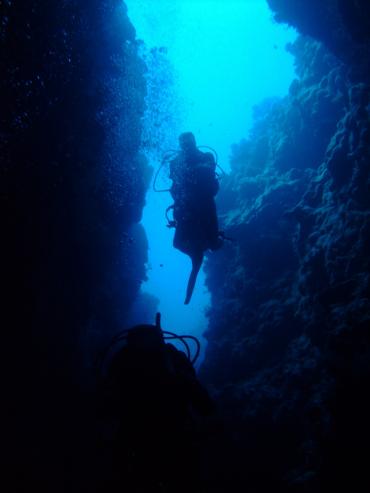
Your Next Adventure
Many shipwrecks are often found in deeper water. That’s why the PADI Deep Diver course is a natural companion to the PADI Wreck Diver course. Sometimes you can take these two specialties concurrently.
Other training to consider is the PADI Enriched Air Diver course - on your way to PADI Master Scuba Diver.
DIGITAL UNDERWATER PHOTOGRAPHER
The PADI Digital Underwater Photographer: Underwater photography is one of the most popular diving specialties, and the rise of digital underwater photography has made it easier and more fun than ever. The PADI Digital Underwater Photographer course gets you going quickly with today modern digital equipment, whether you use a point-and-shoot snap camera or a sophisticated D-SLR like the pros.
The Fun Part
It's a great way to relive the adventures you’ve had. Plus capture images to share with your friends and family.
What You Learn
How to choose the right underwater camera system for you;
The PADI SEA method for getting great shots quickly;
The three primary principles for good underwater photos.
The Scuba Gear You Use
You use all the same basic scuba gear you would use for the diving environment as well as an underwater photography system. We sell Intova and Fuji Cameras and Underwater Housings and Strobe and have special deals for those completing this course with us. Check out our Online Retail Store now.
The Learning Materials You Need
Avoid the frustration of learning underwater photography through trial and error. The PADI Digital Underwater Photography crewpak shortens the learning curve with tips and hints from the pros.
Topics covered include:
Basic photography tips
Strobe diagrams for a variety of effects
Tips for eliminating backscatter
An explanation of the various digital file formats
How to bring back the color in your images
The crewpak includes the PADI Digital Underwater Photographer Manual and submersible white balance slate. The course materials preview skills you’ll practice with your instructor. Once the course is over, use your manual as a reference guide as you explore new environments and to evolve your skills.
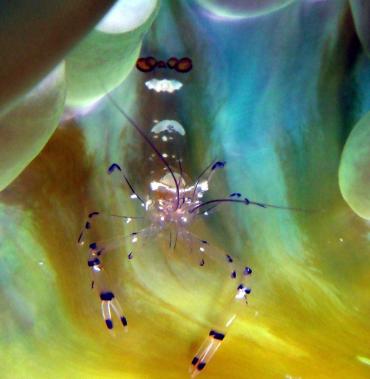
Prerequisites:
PADI Open Water Diver or Junior Open Water Diver certification
Your Next Adventure
Two excellent specialties to pair with underwater photography are the PADI Enriched Air Diver course, and the PADI Dry Suit Diver course on your way to PADI Master Scuba Diver The PADI Enriched Air Diver course allows you to extend your time underwater so you have more time to capture images. In cooler climates, a dry suit allows you to dive comfortably longer, and to make more dives.
You may also find the Peak Performance Buoyancy course gives you helpful tips to optimize your weighting and skills so you’ll be in better position to capture that perfect picture.
DRIFT DIVER
The PADI Drift Diver Specialty course introduces you to the coolest magic carpet ride you’ll ever experience. This course shows you how to enjoy rivers and ocean currents by “going with the flow,” staying with your dive partner, communicating with the dive boat and knowing where you are the whole time.
The Fun Part
Drift Diving is nearly effortless and relaxing. You simply glide along and enjoy the rush of flying underwater while the current does the work.
The Learning Materials You Need
The PADI Drift Diver CrewPak
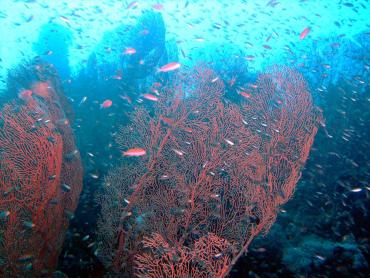
What You Learn
During your PADI Drift Diver certification course, you learn about:
Planning, organization, procedures, techniques, problems and hazards of drift diving
An introduction to drift diving equipment – Surface marker buoys, lines, reels
Buoyancy-control, navigation and communication for drift diving
Site selection and overview of aquatic currents – causes and effects
Techniques for staying close to a buddy or together as a group
The Scuba Gear You Use
You use all the basic scuba gear plus some scuba accessories such as floats, lines and reels.
Check with us, your local dive shop, about gear rentals and packages offered with this course. You can find most everything at the scuba diving shop
Prerequisites:
PADI Open Water Diver or Junior Open Water Diver at least 12 years old
Your Next Adventure
Peak Performance Buoyancy teaches you how to trim your weights and body positioning for the feeling of weightlessness and effortless diving experience. Boat Diving showing you the different techniques for entering and exiting the water, compliments the Drift Diver Course perfectly.
DRY SUIT
The PADI Dry Suit Diver course: Stay warm & toasty on a dive! Then dive dry. Yes! Unlike a wetsuit, a dry suit seals you off from the outside water & that keeps you warm! Even in surprisingly cold water. Dive year round regardless of the temperature.
The Fun Part
Dry suits let you dive more challenging dive sites, and extend your dive season. When you have the right cold water scuba diving attire, you can stand up to the elements and take advantage of the generally better visibility offered by winter months. As a dry suit diver, you’re equipped to scuba dive some of the world’s incredible dive sites in the world’s cooler regions that are best enjoyed in a dry suit even in their warmer months.
What You Learn
Gain the knowledge and skills to safely don, dive with, doff and store a dry-suit. Get introduced to the different types of suits so you can make a very informed decision if considering purchasing a dry suit.
You learn:
Dry suit buoyancy control skills
Dry suit maintenance, storage and basic repair
Undergarment (fleece or overall-type garments worn under the dry suit) options
Practical skills you’ll master in this course:
Dry Suit Familiarization
Safety Checks
Entry Techniques
Bubble Check
Buoyancy Check
Descent and Ascent techniques
Fin Pivot
Hover
Excess gas in feet emergency roll drill
Stuck inflator emergency drill
Stuck exhaust valve emergency drill
Ascent procedure
Remove and replace scuba unit and weight belt on the surface
Exit techniques
Removal of dry suit, storage and maintenance
The Scuba Gear You Use
You use cold water scuba diving equipment including a dry suit.
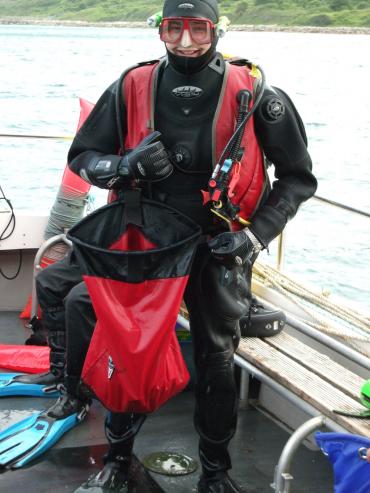
The Learning Materials You Need
The PADI Dry Suit Diving crewpak (DVD and manual) is the owner’s guide you didn’t get with your dry suit. Topics include:
Basic dry suit repairs,
How to pack a dry suit to prevent damage
Maintenance tips
Additionally, the course materials preview skills and activities you’ll practice in the PADI Dry Suit Specialty course including
Handling and avoiding potential problems
Buoyancy control.
Prerequisites:
PADI Open Water Diver or Junior Open Water Diver 10 years +
Your Next Adventure
Scuba diving with a dry suit is useful when diving many types of dive sites. A dry suit is necessary when ice diving and sometimes while altitude diving.
Many technical divers wear dry suits on almost every dive due to the length of the time spent underwater. The longer the diver is in the water, the more thermal protection is required.
Emergency Oxygen Provider
The PADI Emergency Oxygen Provider Course: Be the one ready to help a fellow diver should the need arise by becoming a PADI Emergency Oxygen Provider.
The Fun Part
Breathe easy—knowing that you know how to recognize illnesses treatable by emergency oxygen. Being the best buddy you can be means being prepared – especially in a time of need.
What You Learn
You learn how to recognize diving illnesses treatable by emergency oxygen. Properly setup equipment
Administer emergency oxygen

The Scuba Gear You Use
Scuba gear is not necessary to take this course.
The Learning Materials You Need
The PADI Emergency Oxygen Provider Manual is an important component of PADI’s Emergency Oxygen training program. Before class, you’ll review a step-by-step explanation of when and how to provide emergency oxygen. You’ll also learn about safety considerations, and how to assemble and disassemble emergency oxygen equipment. The care-at-a-glance card is a quick reference guide to pack in your gear bag and review in case of an emergency.
Prerequisites
Though suited for divers, this course has no prerequisites and doesn’t include dives, which means it is equally applicable to those who are around divers – boat crew, non-diving buddies, lifeguards, and shore staff. You don’t need any previous CPR or first aid training to take the course.
Your Next Adventure
The Emergency First Response certification, which covers CPR and first aid, pairs perfectly with the Emergency Oxygen Provider course.
You’ll also want to be sure to complete your Rescue Diver and Master Scuba Diver rating to be the best prepared dive buddy around.
Enriched Air Diver
Scuba Diving with Enriched Air Nitrox. The PADI Enriched Air Diver course is PADI’s most popular specialty scuba diving course, and it’s easy to see why. Scuba diving with enriched air nitrox gives you more no decompression dive time. This means more time underwater, especially on repetitive scuba dives.
The Fun Part
You can typically stay down longer and get back the water sooner. No wonder many divers choose this as their very first specialty.
What You Learn
Techniques for getting more dive time by using enriched air nitrox.
Enriched air scuba diving equipment considerations.
Enriched air considerations, including managing oxygen exposure, how to tell what’s in your scuba tank and how to set your dive computer
The Scuba Gear You Use
You use all the basic scuba gear. Your dive regulator. must be enriched air compatible.
Contact us to discuss the equipment you will need, and our packages offered with this course.
Prerequisites
To enroll in the PADI Enriched Air Diver course, you must: 15 years or older.
Have a PADI Open Water Diver certification (or have a qualifying certification from another organization)
Ask us how you can start your PADI Enriched Air Diver course during your PADI Open Water Diver course.
The Learning Materials You Need
The Enriched Air Diver crewpak includes all required materials* to complete PADI’s Enriched Air Diver specialty. The Enriched Air Diver Manual covers the procedures for diving with Enriched Air (up to 40%) and the Enriched Air Diving video on DVD demonstrates step-by-step how to plan a dive using multiple dive tables. The crewpak also includes the 32%, 36% and the DSAT Oxygen Exposure tables.
* The RDPTM used in the PADI Open Water Diver course is required but not included with this crewpak.
Your Next Adventure
Diving with enriched air nitrox benefits all types of diving, but it goes especially well with these specialties:
PADI Wreck Diver course – Popular wrecks tend to be deeper, so enriched air nitrox maximizes your exploration time;
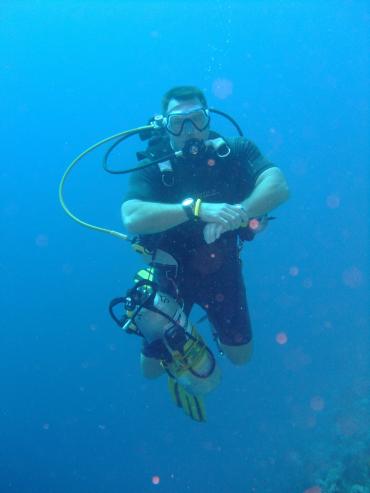
PADI Deep Diver course – The deeper you dive, the shorter your no stop time – but enriched air nitrox increases it, giving your more time at depth;
PADI Digital Underwater Photographer – Photographers usually like to make several dives so they can get lots of pictures. Enriched air nitrox reduces the amount of residual nitrogen you accumulate, allowing repetitive dives to be longer;
PADI Master Scuba Diver The PADI Enriched Air Diver course counts toward your Master Scuba Diver rating -- the highest non professional rating in recreational diving.
EQUIPMENT SPECIALTY
The PADI Equipment Specialist Course: Don’t miss a dive due to a scuba gear issue. Whether it's a blown o-ring, regulator problem, wetsuit tear or a broken fin strap, you can learn how to manage basic scuba equipment adjustments.
As a PADI Equipment Specialist, you are prepared for the basic scuba equipment maintenance, care and adjustments you'll encounter every day. In addition, you'll learn interesting background information about how your gear works, how it’s repair and other information that helps you with your equipment investment.
The Fun Part
The more you know about how your dive gear works, the more...
Comfortable you are with it;
Performance you get from it;
You can care for it.
What You Learn
Review the theory, principles and operation of scuba diving equipment
Learn about routine, recommended care and maintenance procedures, and equipment storage
How to overcome common problems with equipment and recommended professional maintenance procedures (may include a demonstration of repair procedures)
Gain simple suggestions for comfortable equipment configurations and an introduction to new gear (may include optional confined water dive to try new or unfamiliar equipment)
The Scuba Gear You Use
You will have a chance to see and interact with many types of scuba gear, accessories, dive lights, gear bags, Surface Marker Buoys and Reels, dive computers, BCDs, regulators dive knives, scuba weight systems, photography equipment and more!
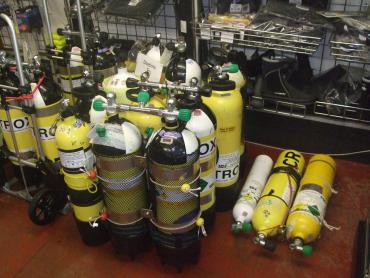
The Learning Materials You Need
Curious how scuba tanks are made? Ever wondered what the inside of your regulator looks like? The Encyclopedia of Recreational Diving DVD-ROM explains it all with videos and four-color diagrams. In addition to a comprehensive overview of diving equipment, the Encyclopedia also covers diving physics, physiology and the history of scuba diving.
The Encyclopedia of Recreational Diving is also available as a full-color book.
Prerequisites
Must be a PADI Scuba Diver or Junior Scuba Diver
No dives are required, so you can take the Equipment Specialist course any time of the year
Your Next Adventure
The PADI Equipment Specialist Course is not an equipment repair course, but it provides the foundation you’ll want if you’re interested in learning equipment repair, and a must if you are thinking of becoming a Divemaster – think of what an important buddy you can be if you are able to assist on equipment issues.
Multilevel Diver
The PADI Multilevel Diver Course: Maximize your dive time so you can explore more!
In this course, you learn how to plan dives that extend your bottom time by crediting you for slower nitrogen absorption when you ascend to a shallower depth. That’s the way you really dive, after all.
The Fun Part
This is a great way to learn how to make multilevel dives even if you forget to bring your dive computer.
What You Learn
You'll learn what multilevel diving is and why you want to plan for multilevel dives. You'll also get to see the various types of multilevel dive calculators (including dive computers), as well as learn about multilevel dive planning, organization, procedures, techniques, and potential problems. You'll plan a multilevel dive profile and dive it with your PADI Instructor.
You learn how to:
Plan and execute multilevel dives (different depths on the same dive)
Back up your dive computer and plan multilevel dives
Maximize your no stop time
The Scuba Gear You Use
You’ll need your basic scuba diving equipment. It’s helpful to have your dive computer.
The Learning Materials You Need
The electronic Recreational Dive Planner (eRDP ML), Multilevel version is a great tool to help you plan your multilevel dives.
Plan up to 5 consecutive dives
Plan up to 3 consecutive multi-level dives
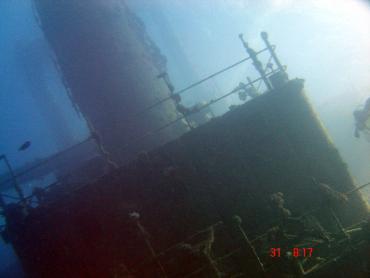
Prerequisites
You must be: A PADI Open Water Diver or Junior Open Water Diver (or have a qualifying certification from another training organization). At least 12 years old
Your Next Adventure
Multilevel diving is often conducted while deep diving or wreck diving. Multilevel diving combined with Enriched Air Nitrox provides the longest no stop dive times possible.
Night Diver
The PADI Night Diver Course: As the sun sets, you don your dive gear, slip on your scuba mask and bite down on your dive regulator. A deep breath and you step off the boat – into the underwater night. Although you’ve seen the dive site many times before, this time you drop into a whole new world and watch it come to life under the glow of your dive light.
The Fun Part
Introduce yourself to the whole new cast of critters that comes out after the sun goes down. See your favorite dive sites from a whole new perspective at night.
What You Learn
Night dive planning, organization, procedures, techniques and potential problems
How to control your buoyancy at night
Entries, exits and underwater navigation at night. Nocturnal aquatic life, since many of the plants and animals you'll see are different.
The Scuba Gear You Use
You will use the basic scuba diving equipment with a dive light.
The Learning Materials You Need
Night Diving – there’s really nothing like it. With the right training and a little bit of planning, night dives can be as easy as diving during the day. PADI’s Night Diver crewpak (manual and video on DVD) will help you prepare for your first night dives with a PADI Instructor. Topics covered include: tips for navigating at night, night diving etiquette, establishing an entry and exit point, and how to maintain your underwater light system.
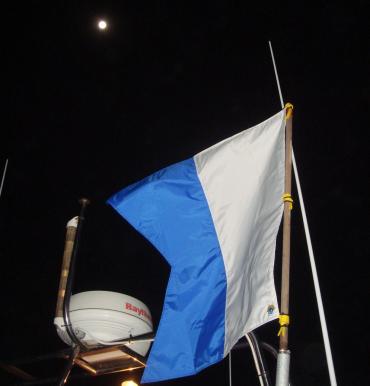
Prerequisites
You must be: a PADI Open Water Diver or Junior Open Water Diver certification. 12 yrs+
Your Next Adventure
Take your navigation skills to new levels with the PADI Underwater Navigator course.
Get your buoyancy perfected in with the PADI Peak Performance Buoyancy course.
Recognize what those creatures are on your night dive with the AWARE Fish Identification course.
Peak Performance Buoyancy
The PADI Peak Performance Buoyancy Course
What is neutral buoyancy? Scuba divers like to be neutrally buoyant so they neither sink nor float. It can be a tricky thing. Divers who’ve mastered the highest performance levels in buoyancy stand apart. You’ve seen them underwater. They glide effortlessly, use less air and ascend, descend or hover, almost as if by thought. They interact gently with aquatic life and affect their surroundings minimally. The PADI Peak Performance Buoyancy course refines the basic skills you learned as a PADI Open Water Diver and elevates them to the next level.
The Fun Part
The fun part of this course is giving your dive skills a polish you may not have thought possible.
What You Learn
How to trim your scuba gear so you’re perfectly balanced in the water;
Nuances in determining weight so you’re not too light nor too heavy by even a slight degree;
How to streamline to save air and move smoothly through the water;
How to hover effortlessly in both a vertical position and a horizontal position.
The Scuba Gear You Use
You use all your basic scuba gear.
The Learning Materials You Need
PADI’s Peak Performance Buoyancy video on DVD provides an overview of the skills you’ll practice with your instructor. It comes with an enclosed booklet that includes a buoyancy assessment questionnaire and basic weighting guidelines – useful whenever you purchase new gear or dive in a new environment.
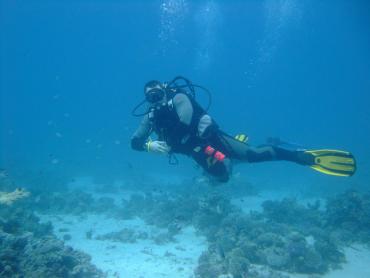
Prerequisites
To enroll in the PADI Peak Performance Diver course, you must:
Have a PADI Open Water Diver certification (or have a qualifying certification from another organization)
Your Peak Performance Buoyancy Adventure Dive in the PADI Advanced Open Water Diver /Adventure Diver course credits (at your instructor’s discretion) as the first dive in the PADI Peak Performance Buoyancy course
Your Next Adventure
Part of mastering buoyancy control is learning how to use your BCD and weight system effectively, plus maintain streamlining. This makes the PADI Equipment Specialist course a natural companion, because you learn more about these pieces of gear and how to make them suit your specific diving styles.
Project AWARE Specialty
The underwater world needs heroes. You can be one of them by championing the causes of the world’s most fragile and important aquatic ecosystems.
The Fun Part
You can make a difference. Learn about some of the most pressing problems facing these vulnerable environments and everyday actions you can take to help conserve them. It’s informative, interesting and most importantly, you learn how to make a difference.
What You Learn
Project AWARE Foundation is the scuba diving industry’s leading nonprofit environmental organization dedicated to conserving the aquatic environment through education, advocacy and action. Besides completing the Project AWARE Specialty course, you can become a partner in the efforts to preserve the underwater environment.
You learn about:
The ocean commons and coastal zone issues
Fisheries challenges and sustainability
Coral environment overview and inhabitants
The role of the scuba diver in protecting aquatic environments
The Learning Materials You Need
Our World, Our Water peels back the curtain and takes you behind the scenes of our underwater world. Discover just how important our underwater eco-systems are and what you can do to help protect them.
Visit Project AWARE Foundation to download your copy today.
Prerequisites
There are no prerequisites for this course.
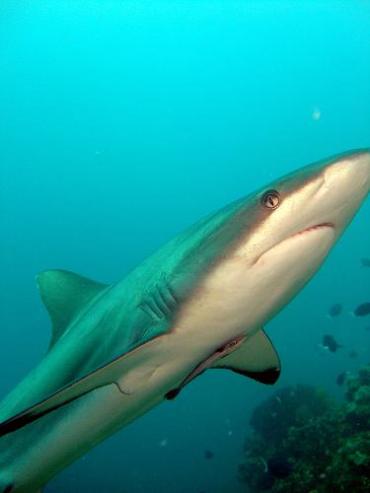
Your Next Adventure
If you are interested in becoming an underwater conservationist, you’ll also enjoy these specialty courses:
AWARE Fish Identification
Coral Reef Conservation
Underwater Naturalist
Peak Performance Buoyancy
Digital Underwater Photography
Underwater Videographer
Search and Recovery
The PADI Search and Recovery Diver Course
Have you ever dropped something in the water? Are you looking for lost “treasure”? The PADI Search and Recovery Diver Specialty course will teach you effective ways to find objects underwater and safely bring them to the surface. Small, large or just awkward, there is a way to bring them up.
The Fun Part
Find lost items and lift them to the surface. It’s fun to use the lift bag. Not only are these skills fun, but very practical and ultimately useful because eventually, you’ll lose something in the water. As a Search and Recovery Diver, you’ll know how to search for and recover it.
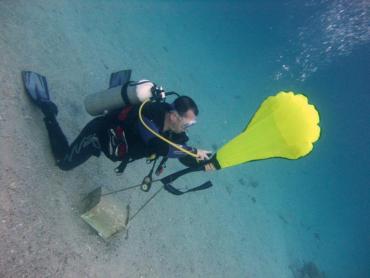
What You Learn
Search and recovery dive planning, organization, procedures, techniques and how to deal with potential problems
How to locate large and small objects using search patterns
How to use a lift bag and other recovery methods
Limited visibility search techniques
The Scuba Gear You Use
You will use the basic scuba diving equipment, an underwater compass and a lift bag.
The Learning Materials You Need
The Search and Recovery crewpak (DVD and manual) includes everything needed to prepare for the PADI Search and Recovery Specialty course. The manual includes a search pattern reference guide, knot-tying diagrams and an overview of how to organize a search. The video on DVD provides additional information on performing search patterns and how to plan a search in variety of conditions.
Prerequisites
To take the PADI Search and Recovery Diver course, you must be: 12years +
A certified PADI (junior) Advanced Open Water Diver
A PADI (junior) Open Water Diver and a PADI Underwater Navigator
Your Next Adventure
Drift Diver - you never know what you may come across whilst drifting along – Deep Diver – will you find that piece of treasure lost overboard – a priceless amulet maybe?
UNDERWATER NATURALIST
The PADI Underwater Naturalist Course: Look closer to see more on your next dive. Look for symbioses, predator/prey and other relationships between aquatic plant and animal life.
Learn not just what fish and animals are, but how they interact with each other and the environment.
The Fun Part
Learn about why some creatures behave the way they do and what their role is in the aquatic ecosystem.
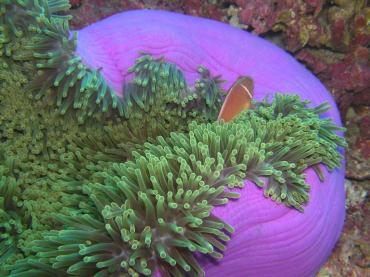
What You Learn
The major aquatic life groupings, interactions and factual information that dispels negative myths.
The role of aquatic plants, food chains and predator prey relationships. Why do you think Nemo lives in an anemone?
Responsible interactions with aquatic life.
The underwater naturalist’s view of organisms and their roles in the environment
You put this information into practice during your two open water dives.
The Scuba Gear You Use
You will use the basic scuba gear and perhaps some scuba accessories.
Check with us, your local dive shop about gear rentals and packages offered with this course. You can find most everything at the scuba diving shop
Prerequisites
Must be a PADI Open Water Diver or Junior Open Water Diver (or qualifying certification from another organization)
Your Next Adventure
If you are interested in becoming an underwater conservationist or documenting what you encounter, you’ll also enjoy these specialty courses:
AWARE Fish Identification
Coral Reef Conservation
Project AWARE Specialist
Peak Performance Buoyancy
Digital Underwater Photography
Underwater Videographer
Underwater Navigator
The PADI Underwater Navigator Course: Be the diver everyone wants to follow and make your sense of direction legendary with the PADI Underwater Navigator Specialty course.
The Fun Part
Finding your way is not a matter of luck! When everyone’s buzzing about a reef or checking out a shipwreck, they’re having a great time – until it’s time to go. Then they turn to you, because as a PADI Underwater Navigator, you know the way back to the boat.
What You Learn
Underwater navigation can be challenging, but in the PADI Underwater Navigator Specialty course, you master the challenge. You learn the tools of the trade, including navigation via natural clues and by compass.
You learn
Navigation patterns
Natural navigation (without a compass)
Compass navigation
How to “mark” or relocate a submerged object or position from the surface
Underwater map making
How to follow irregular courses with the Nav-Finder
Dive site relocation
How to estimate distance underwater
The Learning Materials You Need
Accurate navigation is based on thoughtful preparation. With that in mind: PADI’s Navigation crewpak includes everything needed to complete the Underwater Navigation specialty. The manual and DVD preview the navigation skills you’ll practice with your instructor both on land and underwater. Use the Nav-Finder to track where you’ve been and chart the most direct route back to the boat or shore.
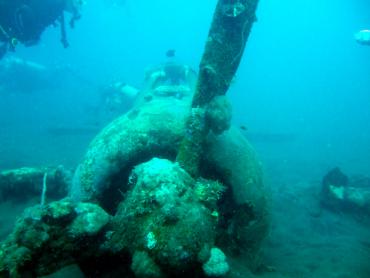
The Scuba Gear You Use
You will use the basic scuba diving equipment, some scuba accessories such as a dive slate and an underwater compass.
Prerequisites
You must be: A PADI Open Water Diver or Junior Open Water Diver 10 yrs+ (or qualifying certification from another organization)
Your Next Adventure
Underwater navigation is an important skill no matter what type of scuba diving you’re doing. It’s especially useful when night diving, wreck diving or when you’re searching to recover a lost item underwater.
Underwater Videographer
The PADI Underwater Videographer Course: Other than taking someone diving, there’s only one way to show someone the sounds, motion and dynamics of the underwater world: video.
The Fun Part
Show your scuba vacation adventures to your friends and family. Use your editing skills to share your clips with the world through YouTube, MySpace, Facebook and more. Use your underwater videos to turn more of your friends into dive buddies.
What You Learn
The PADI Underwater Videographer Specialty course shows you how to create videos that are interesting, entertaining and worth watching again and again. Selecting, maintaining and caring for your underwater video equipment. Videography fundamentals, such as...
• exposure
• focus
• shot types
• moves
• story line
• shot sequencing.
The post-dive editing process where you take your raw footage and create an underwater masterpiece.
By the time you complete the course, you’ll have gone through the entire basic video production process.
The Scuba Gear You Use
You will use basic scuba diving equipment and underwater video equipment.
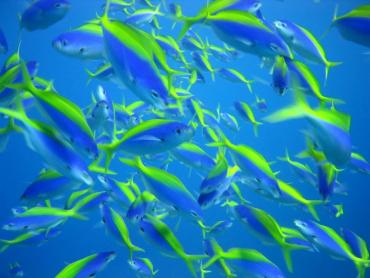
Check with your local dive shop about gear rentals and packages offered with this course. You can find most everything at the scuba diving shop
Prerequisites
You must be: A PADI Open Water Diver or Junior Open Water Diver 10 yrs+ (or qualifying certification from another organization)
Your Next Adventure
Part of the secret to getting good video is having great buoyancy skills to capture the footage you’re seeking. The Peak Performance Buoyancy course can help you fine tune your skills.
Also, some of the tips and skills you learn from underwater videography can also help you take better underwater photos. Check out the Digital Underwater Photography course and of course Peak Performance Buoyancy.
Wreck Diver
The PADI Wreck Diver Course: Whether sunk on purpose as an artificial reef or the result of mishap, wrecks open fascinating windows to the past. Most divers find wrecked ships, airplanes and even automobiles nearly irresistible because they’re intriguing to explore, exciting avenues of discovery, and usually teeming with aquatic life. The PADI Wreck Diver course teaches you the ins and outs of rewarding, responsible wreck diving. Here is Weymouth there are over 120 wrecks in a 20 mile radius!
The Fun Part
The fun part of the PADI Wreck Diver course is visiting wrecks, unlocking mysteries and starting to gain the knowledge and experience that allows you to see things that others overlook. Sometimes, only the trained, experienced eye recognizes that a small hole or open door likely caused the vessel’s demise.
What You Learn
Techniques for diving exploring shipwrecks, and how to avoid common hazards
How to research and learn the background of your favorite wrecks
Wreck scuba diving equipment considerations
Considerations and techniques for entering intact wrecks
Experience in planning, organizing and making at least four wreck dives under the supervision of your PADI Instructor
The Learning Materials You Need
Prepare for the exciting –and specialized- world of wreck diving with PADI’s Wreck Diver crewpak. Preview the skills you’ll practice during your open water dives, become familiar with wreck diving etiquette, and take in breath-taking images from wreck diving hotspots around the world.
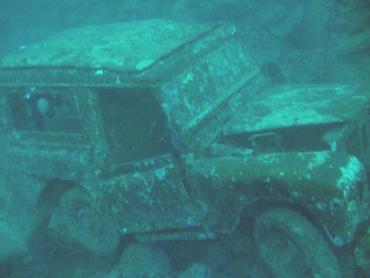
The Scuba Gear You Use
You use all the basic scuba gear including a dive computer, some accessories and a dive light.
Prerequisites
To enroll in the PADI Wreck Diver course, you must
Be 15 years or older
Have a PADI Adventure Diver certification (or have a qualifying certification from another organization)
Your Next Adventure
Many shipwrecks are often found in deeper water. That’s why the PADI Wreck Diver course is a natural companion to the PADI Deep Diver course. Sometimes you can take these two specialties concurrently.
Other training to consider is the PADI Enriched Air Diver course on your way to PADI Master Scuba Diver.
